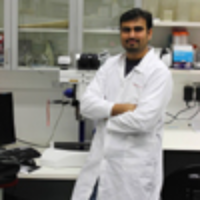Dynamics of Siberian Fir Stands in Forest Ecosystems of Eastern Sayan Spurs
Published on: 24th December, 2024
Dynamics of Siberian fir stands in forest ecosystems of the Eastern Sayan spurs were studied before and during the period of polygraph infestation.
The Police Power of the National Health Surveillance Agency – ANVISA
Published on: 27th December, 2024
The National Health Surveillance Agency (ANVISA) is a public institution created by Law 9782/1999, which integrates the field of Collective Health and acts in the prevention, control, and inspection of sanitary conditions in various sectors, such as food, health, pharmacies, hospitals, and commercial establishments. Its main objective is to guarantee the protection of public health, ensuring that products, services, and environments comply with established standards, to promote health and preventing diseases. To exercise its inspection and control function, Sanitary Surveillance has the power of sanitary police, which gives it the authority to apply necessary measures and curb practices that pose risks to the health of the population.The performance of the Sanitary Surveillance is fundamental to prevent health risks in any part of society and to guarantee national programs for patient safety. It is also essential to prevent diseases, control risks, and monitor compliance with health standards and specific regulations. The police power of Sanitary Surveillance consists of establishing norms and technical regulations, carrying out inspections and inspections, issuing temporary or permanent interdiction orders in establishments that do not comply with the norms, as well as forwarding complaints to the Public Ministry in cases of crimes against public health. Arrests carried out by Sanitary Surveillance agents are extreme measures and applied in serious situations of risk to public health or when there is repeated disrespect for sanitary regulations. The prohibited establishments have the right of defense and may seek to regularize the situation to obtain the release of activities.The performance of the Sanitary Surveillance has significant impacts on the prevention of disease outbreaks and epidemics. Identifying and correcting inappropriate practices helps to prevent the spread of pathogenic agents and reduce the risk of contagion in collective environments. The institution’s preventive and supervisory activities contribute to reducing risks to the population’s health, preventing disease outbreaks, food poisoning, and the proliferation of pests, among other problems. Finally, the importance of exercising police power with transparency, impartiality, and respect for individual rights is emphasized, always aiming at the collective interest and the promotion of the common good. In summary, Health Surveillance plays an essential role in protecting public health, seeking to ensure that the population has access to safe products and services, contributing to the improvement of quality of life and disease prevention.
Investigation of Bronchoscopy Associated Pseudo-infections
Published on: 6th May, 2025
Introduction: Bronchoscopy could lead to local spread of pre-existing infection, spread of infection from one patient to another if the bronchoscope is disinfected inadequately, or, isolation of microorganisms from bronchoscopic specimens in a patient who is clinically not infected, i.e., pseudo-infection. This study is one such investigation of an outbreak of bronchoscopic pseudo-infections in a tertiary care hospital.Materials and methods: Bronchoalveolar lavage (BAL) samples were inoculated onto MacConkey Agar and 5% Sheep Blood Agar and incubated at 37 °C overnight. The growths obtained on culture media were processed for identification and antimicrobial susceptibility on Vitek 2 Compact as per manufacturer’s instructions. To investigate the outbreak, 5 mL - 10 mL of sterile water was flushed through the channels of disinfected bronchoscope and collected in a sterile container. The samples were centrifuged and inoculated onto MacConkey Agar and 5% Sheep Blood Agar. The growths obtained were further processed similarly as the BAL samples were processed. Environmental swabs collected from the bronchoscopy unit were also processed as the procedure mentioned above.Results: Bronchoalveolar lavage of 3 patients in a period of 1 week were contaminated with multidrug resistant Klebsiella pneumoniae. Two out of five bronchoscope fluid samples were also contaminated with Klebsiella pneumoniae. Among the swabs collected from bronchoscope unit, Klebsiella pneumoniae was isolated from the detergent box of the endowasher. Conclusion: The risk of propagation of infection via a bronchoscope can be evaded by proper reprocessing and improving the sterilization practices.
Browse by Subjects
Chemistry Group Journals
Pharma Group Journals
Mathematics & Physics Group Journals
Clinical Group Journals
- Archives of Food and Nutritional Science
- Annals of Dermatological Research
- International Journal of Clinical Microbiology and Biochemical Technology
- Journal of Advanced Pediatrics and Child Health
- Journal of Pulmonology and Respiratory Research
- Insights in Clinical and Cellular Immunology
- International Journal of Clinical Anesthesia and Research
- Journal of Clinical Intensive Care and Medicine
- Journal of Clinical, Medical and Experimental Images
- Journal of Neuroscience and Neurological Disorders
- Insights in Veterinary Science
- Journal of Stem Cell Therapy and Transplantation
- Archives of Asthma, Allergy and Immunology
- Journal of Child, Adult Vaccines and Immunology
- Archives of Cancer Science and Therapy
- Clinical Journal of Nursing Care and Practice
- Annals of Clinical Gastroenterology and Hepatology
- Journal of Hematology and Clinical Research
- Archives of Pathology and Clinical Research
- Annals of Clinical Hypertension
- Journal of Oral Health and Craniofacial Science
- International Journal of Clinical and Experimental Ophthalmology
- Journal of Radiology and Oncology
- Journal of Clinical Nephrology
- Archives of Clinical and Experimental Orthopaedics
- International Journal of Bone Marrow Research
- International Journal of Clinical Virology
- New Insights in Obesity: Genetics and Beyond
- Advanced Treatments in ENT Disorders
- Journal of Clinical Advances in Dentistry
- Insights on the Depression and Anxiety
- Heighpubs Otolaryngology and Rhinology
- Clinical Journal of Obstetrics and Gynecology
- Archives of Surgery and Clinical Research




